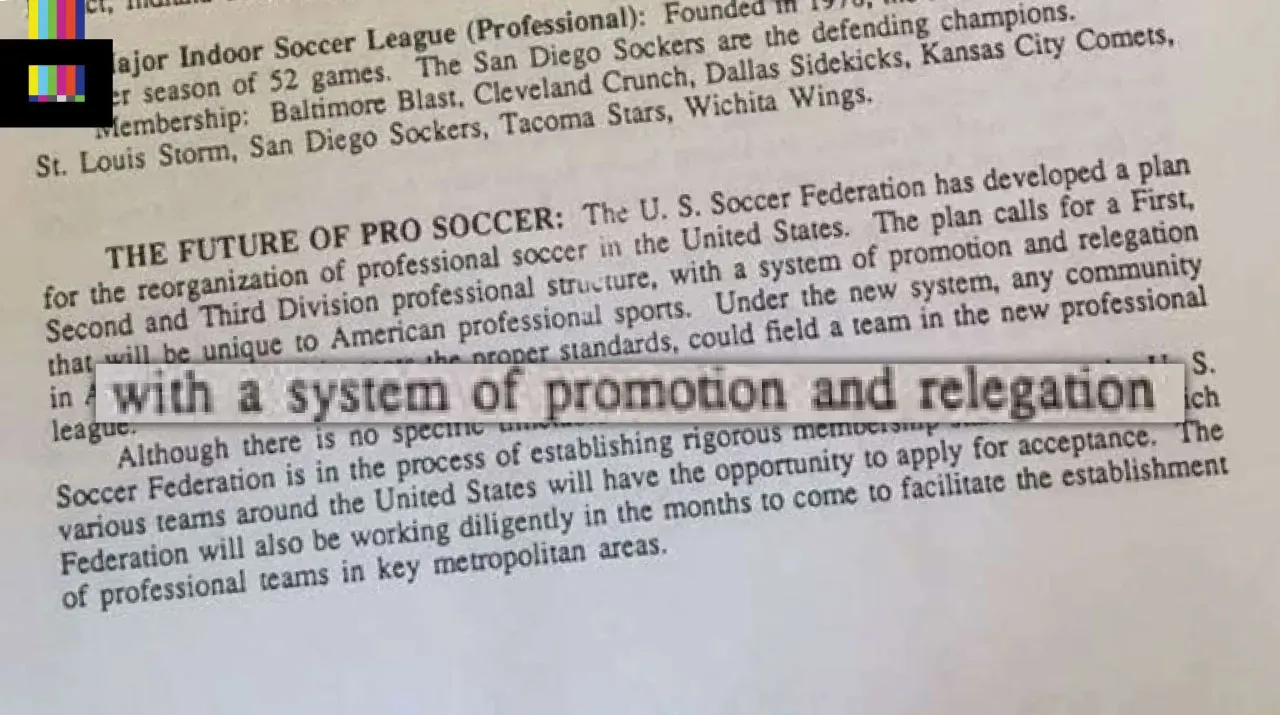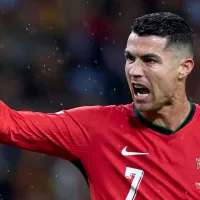Promotion and relegation, aka pro/rel, is a controversial and hotly debated topic in US soccer circles. The United States is one of only a few countries worldwide that does not use the system that allows for the movement of clubs between divisions based on competitive merit. But how things could have been so different. When US Soccer was planning a bid to host the 1994 World Cup, the original plan in the late 1980s included three divisions with promotion and relegation.
Pro/rel in the US? That was the idea
The story begins with the United States’ bid to host the 1994 FIFA World Cup. One caveat of hosting was that US Soccer was required to establish a Division 1 professional men’s league. As of the late 1980s, this did not exist. The North American Soccer League had closed up shop after the 1984 season. The American Soccer League (later the APSL, eventually to evolve into today’s USL) existed, with teams such as the Tampa Bay Rowdies, Washington Diplomats and Fort Lauderdale Strikers. But this was officially only a second division league and not up to major league pro standards.
At that time, the president of the United States Soccer Federation was Werner Fricker. Shortly after the US was officially awarded the World Cup in July 1988, press materials were circulated from the Federation that mentioned the creation of the new pro league setup, including “…a system of promotion and relegation that will be unique to American professional sports.”

These documents and statements have become known as the “Fricker Plan.” What was apparently, at least initially, envisioned was a three-tier professional league structure, with club movement between them.
In 1990, two years after announcing plans for a three tier league, The New York Times reported that “[the league] is an ambitious project, to say the least, especially with so little evidence of progress since plans for the league were first announced.”
The Times added that the United States Soccer Federation had envisioned running the league themselves.
When Fricker lost his 1990 reelection bid for USSF president, that was likely the change that prevented the Fricker Plan from becoming a reality.
Details up for debate
Unfortunately, more specifics about these plans are not available. The actual detailed plan for the professional league system from that time has yet to be unearthed. Fricker himself died in 2001. Plus the documents themselves and contemporary reporting about the plans are up for interpretation.
It remains unclear how far along these plans got. Much like trying to glean original intent from 250-year-old lines in the U.S. Constitution, we are left to postulate on what these statements actually meant. Could any club in any town with a suitable stadium climb all the way to the first division? Could a first division team be sent down?
Whatever the specifics, the pre-1994 timeframe may have been the best opportunity for true pro/rel to ever make it to US shores. With only a handful of D2 pro teams at the time, the massive financial risk to owners that exists today wasn’t an issue. If pro/rel was baked in as a rule from the get-go, nobody could complain about losing value on their investment. It would just be a part of the game.
The path we did go down
Whatever became of the Fricker Plan behind closed doors, we know what did happen. Alan Rothenberg (namesake of the MLS championship trophy from 1996-2007) became president of US Soccer in 1990. He oversaw what was the most financially successful World Cup ever in 1994. USA ’94 still holds the record for highest total attendance 30 years later. And that was with only 24 teams and fewer games than subsequent tournaments.
In 1993, Major League Soccer was founded, kicking off in 1996. It was far from the European-style league system floated by Fricker. It did not incorporate any preexisting clubs, instead forming ten brand new teams in a single-entity setup. Contrary to the “any community” dream in the Fricker Plan, all of the teams were placed in big cities that had other major league sports at the time (except for Columbus, OH).
Prior to launch, Rothenberg had lofty expectations for MLS.
“We’re not expecting overnight success. It could take 10 years to move our sport to the level of the big ones — football, baseball and basketball,” said Rothenberg, in 1994.
In years since, the US Soccer Pro League Standards have set stipulations that limit participation in pro divisions based on market size.
MLS had some struggles in its early years, losing clubs and nearly collapsing entirely. But, while it is not without some issues today, it has evolved into the most successful pro soccer outfit in American history. Underneath MLS, the lower divisions have vastly grown and improved as well. But the pyramid remains a series of disconnected leagues.
One can’t help but wonder.. what if? If a three-tier pro league pyramid was setup in the early 1990s, what would soccer look like in the US three decades later? Would soccer in the United States be more successful? Would there be a stronger foundation of lower-league clubs who could expand the popularity of the sport through every level? The mind wanders.
Our Pick:Includes: Every regular season game, MLS Cup Playoffs, Leagues Cup, & More |
 |














